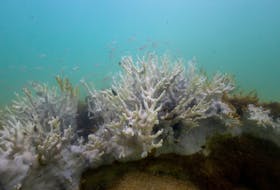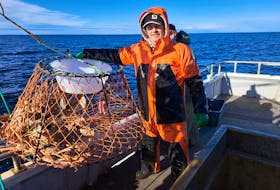
That’s shocking decimation, with the steep drop attributed to many factors, including climate change, habitat destruction and a lack of food.
But let’s not forget the role played by illegal hunting — hunting that has continued despite the five-year prohibition implemented by the province in 2013, for aboriginals and non-aboriginals alike.
Illegal hunting also played a role in the severe dwindling of the Red Wine caribou in central Labrador — a herd that contained only 20 animals a year ago.
The provincial government issued a dire warning about the George River caribou on Monday: “At the current rate of decline and without immediate cessation of illegal hunting, biologists predict this herd could become functionally extirpated in less than five years, meaning that the herd will become so small it will essentially lose its capacity to recover.”
That’s a bleak outlook for animals that have long been a resource for aboriginal peoples in Labrador.
And if the rate at which the herd has diminished in just the past two years is any indication — going from 14,200 animals to 8,938 — that’s the equivalent of 7.2 caribou killed every single day. Which means they could be completely wiped out in less than three and a half years.
“Our government is now assessing next steps to ensure the herd will be protected, and we once again call on individuals who value the herd to adhere to the current hunting ban,” Environment and Conservation Minister Perry Trimper said in a news release.
But clearly there aren’t enough people who value the herd, except for their own personal use, because the hunting ban has done nothing to slow the animals’ demise.
The caribou are under enough threat from changes to their habitat, let alone those who think conservation efforts apply to everyone but them.
But while the days of the caribou in the George River herd are undoubtedly numbered, perhaps we can learn from our neighbours to the south and take tangible action to protect the animals.
In the United States, the American bison was nearly wiped out before conservation-minded ranchers stepped in and set up private reserves where the animals were safe from hunters. Congress and the American Bison Society also took steps to offer the animals protection, and American Indian nations have played a role by offering the animals refuge on tribal land.
So it is possible to make a U-turn on the road to extinction, but it takes co-operation and determination and a meaningful commitment to conservation.
It’ll be too late to lament the loss of the George River herd when the last straggling caribou falls to the ground.








